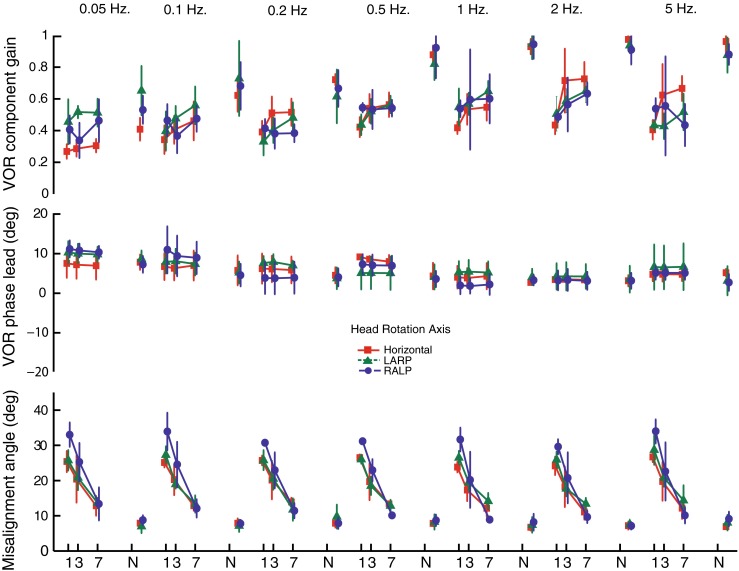FIG. 6.

Mean ± SD gain for the component of the 3D VOR about the axis of head rotation (top), phase lead versus inverse of head velocity (middle), and eye/head misalignment angle (bottom) for N = 4 rhesus monkeys, displayed for 3D VOR eye movement responses during 50 °/s peak whole-body rotations in darkness at 0.05–5 Hz about the horizontal (square), LARP (triangle), and RALP (circle) canal axes on the first, third, and seventh days of continuous stimulation using a head-mounted multichannel vestibular prosthesis. In each case, gain is the ratio [(peak velocity of the VOR component about the axis of head rotation)/(peak velocity of whole-body rotation)], phase is expressed in degrees by which a best-fit sinusoid approximating the inverted eye velocity response’s main component leads a best-fit sinusoid fit to the head velocity, and misalignment is the angle between 3D vectors describing the actual and desired axes of 3D VOR eye movement response at the time of peak eye velocity. The 3D VOR response maintained gain of the desired component while phase did not significantly change and misalignment significantly improved over 7 days of continuous prosthesis for every stimulus frequency, axis, and animal examined. N normal.
